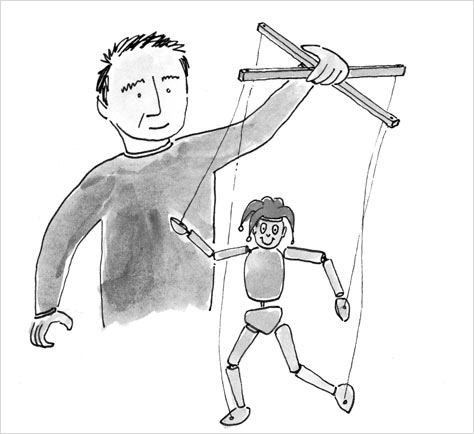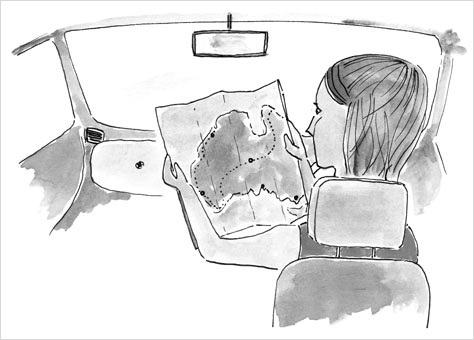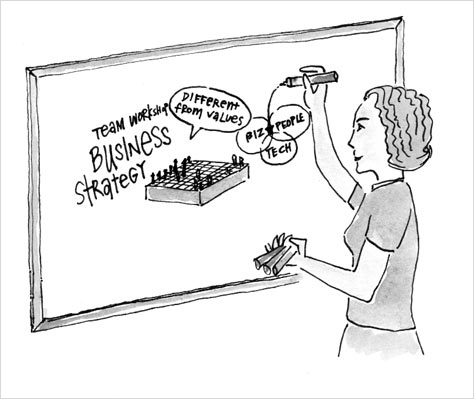There is a second reason why this is an interesting discussion to have. Many UX professionals work in composite roles that might, for example, cover client liaison and elements of project management, as well as actual UX design or research tasks. Regardless of whether a true UX unicorn actually exists, senior UX designers with solid experience on a range of projects may want to advance their careers by stepping into specialized roles or working on more complex projects that require a particular focus.
In the remainder of this article, I’ll describe just six of the roles relating to the UX skillset that senior UX professionals might pursue by leveraging what they’ve already learned on the job.
Project Management
Great project managers are worth their weight in Bitcoins. They balance the triple constraints of time, scope, and costs—and arguably quality, too—and smooth the way for successful delivery, even under overwhelming conditions. They have deep planning and judgment skills.

When we define a project plan, manage stakeholders, ensure communication between the project team, control conflicts and delivery, and articulate—and aim to achieve—the overall objectives for a project, we’re covering some fundamental project-management tasks.
Project managers come in many shapes and sizes and work across many fields, but the project-manager role overlaps with UX design particularly when we’re overseeing the software development life cycle (SDLC). UX designers’ skills in reflecting user and business needs to a design team are similar to the skills project managers need to ensure that a team takes the needs of a client into consideration.
Product Management
If you’ve ever worked in a product-development organization, you’ve undoubtedly worked with a product manager. In a service organization, the role of a product manager may be called a program manager. Because of my inclusive nature, I like to think of them as cousins of user experience—we go to the same parties and speak the same lingo. As with business analysts and customer experience designers, there is a lot of crossover between the values and job functions of product managers and UX designers.

In user-centered design roles, we often work with customers to understand the problems that a product is intended to solve, just as product managers do. But when we switch gears and also start paying attention to the market competition and business models, we’re well and truly in the realm of product management—at the intersection of business, design, and technology.
Some product managers rely strongly on market demographics rather than relying on user research, as UX professionals would. But just as for UX professionals, their role changes over the course of a project, initially eliciting requirements; then representing the needs of users and evaluating and determining feature sets; and later, focusing on acceptance testing to ensure that the product that gets delivered meets users’ needs.
Graphic Facilitation
At UX Mastery, my business partner and I encourage the development of foundational design skills for people who are getting started in user experience. Sketching is right at the core of the UX skillset for several reasons: It helps us to synthesize and make sense of data in a collaborative way. Plus, honing our capacity for visual thinking makes us better, more creative UX designers.

After examining many master UX professionals at work, UX researcher Jared Spool placed sketching at #1 on his list of indispensable UX skills.![]() Have you heard the saying that talking about design is like performing interpretative dance about architecture? Words, while critical, often don’t do our design ideas justice.
Have you heard the saying that talking about design is like performing interpretative dance about architecture? Words, while critical, often don’t do our design ideas justice.
Facilitating, also in Spool’s list of indispensable skills, is an essential part of doing great, collaborative design. We lead our product teams through critical activities—whether interviewing stakeholders and users, analyzing findings from user research, applying problem-solving skills to design issues, or establishing a shared vision for a product.
Bringing sketching and facilitating together in the role of a graphic facilitator makes for a powerful combination. If you’ve ever run a successful participatory design session, you’ll immediately recognize the value of making meetings more interesting, keeping teams more engaged, and as a consequence, making everyone’s job more interesting.
Graphic facilitators do more than just capture a conversation graphically—their large-scale imagery informs and shapes the conversation. They perform a visual dance to lead groups and individuals toward a common goal.
